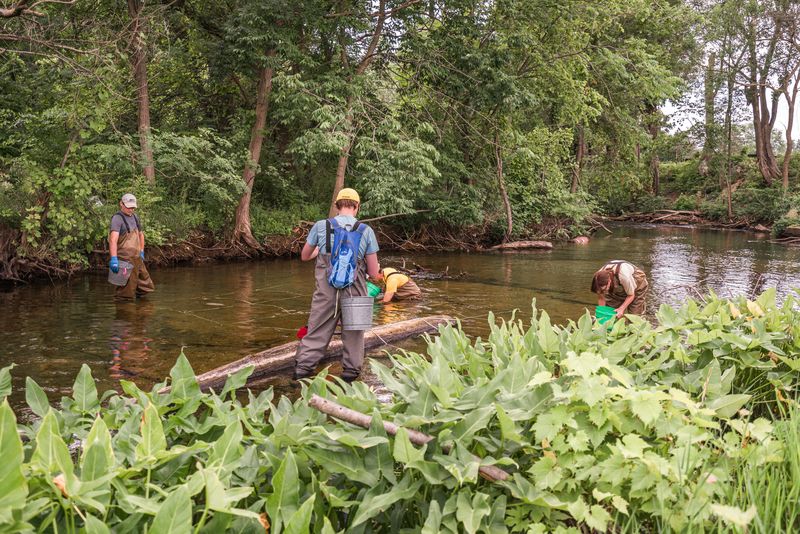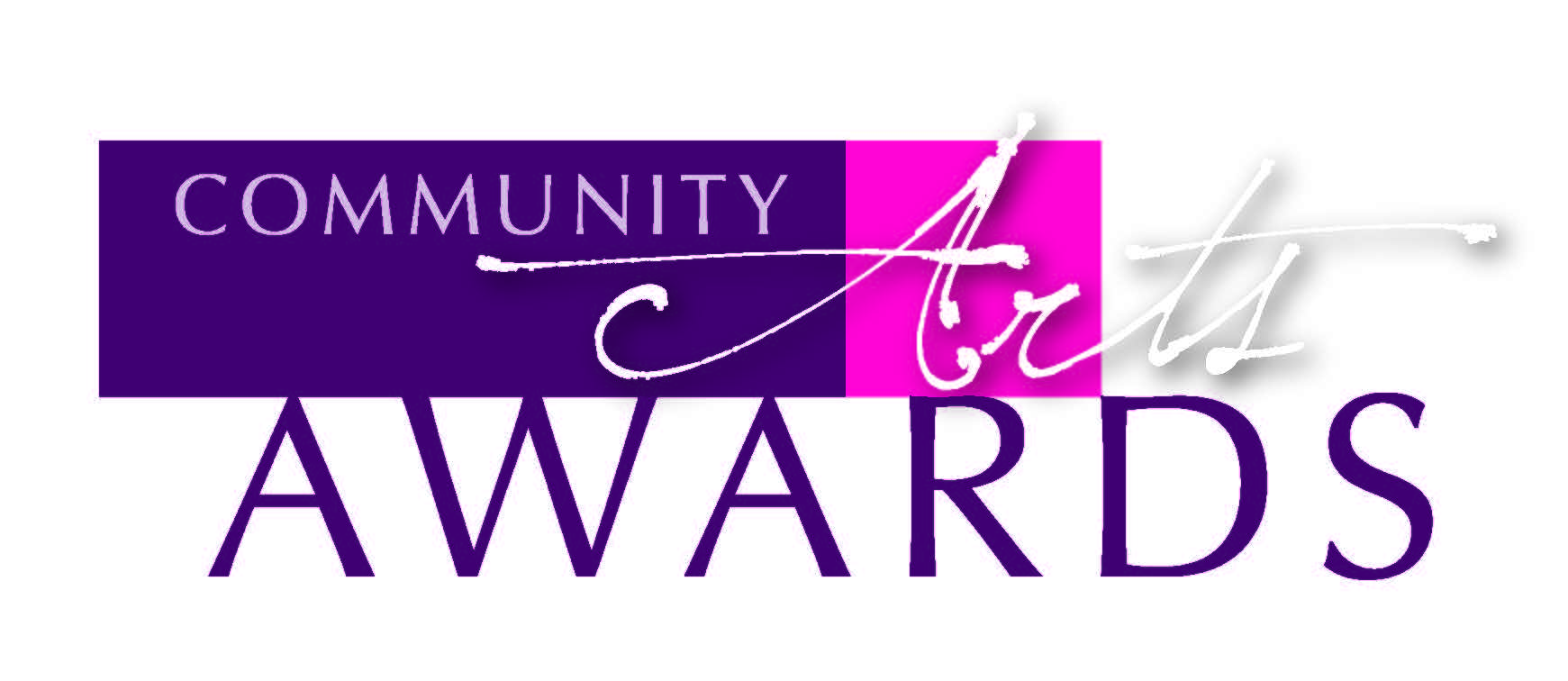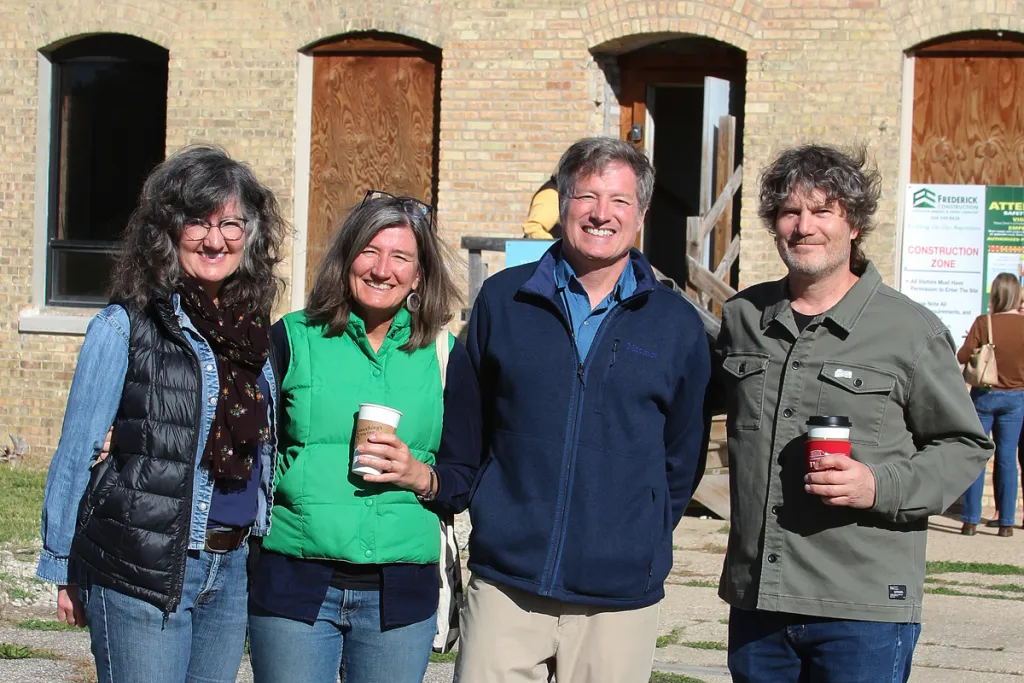The Mill at Vicksburg is about so much more than restoring the building itself. It is also our hope, if economically viable, to remediate and restore the adjacent Portage Creek that runs behind The Mill. Before committing to any remediation work, we hired environmental experts ECT (Environmental Consulting and Technology Inc.) and ASTI Environmental to research the creek and advise on environmental issues we should be aware of, and to get a better understanding of what time, money and resources it will entail to do the restoration the right way.
While surveying, these teams quickly made an exciting finding!
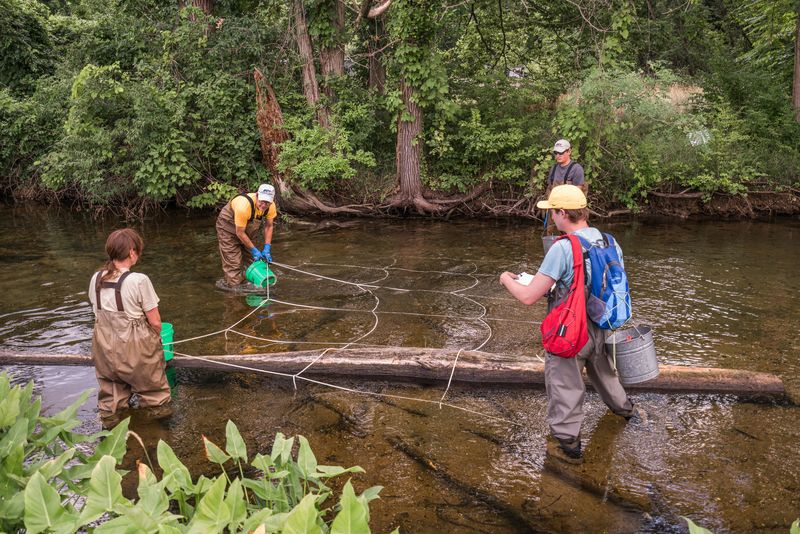
Survey says… Snuffbox Mussels!
As it turns out, the area of Portage Creek behind The Mill is home to a large quantity of endangered mussel species, the snuffbox mussel—a small, triangular freshwater mussel that is found in Alabama, Arkansas, Illinois, Indiana, Kentucky, Michigan, Minnesota, Missouri, Ohio, Pennsylvania, Tennessee, Virginia, West Virginia, and Wisconsin. According to the US Fish & Wildlife Service, it lives in small-to-medium-sized creeks in areas with a swift current, although it’s also been found in Lake Erie and some larger rivers. In fact, this is the first known discovery of snuffbox mussels in Kalamazoo County, according to this chart from Michigan State University.
More about the Snuffbox Mussel
The University of Kentucky’s Office for Environmental Programs Outreach Services gives deeper insight to the rare snuffbox mussel, diving into the ecological role and even some fun facts of this endangered species.
Ecologically, the snuffbox mussel is a filter feeder, extracting microscopic food from the water it takes in through its intake tube (siphon). This particular mussel latches itself onto the gills of fish that serve as a host to provide the bivalve nourishment and transportation. Pretty neat, eh?
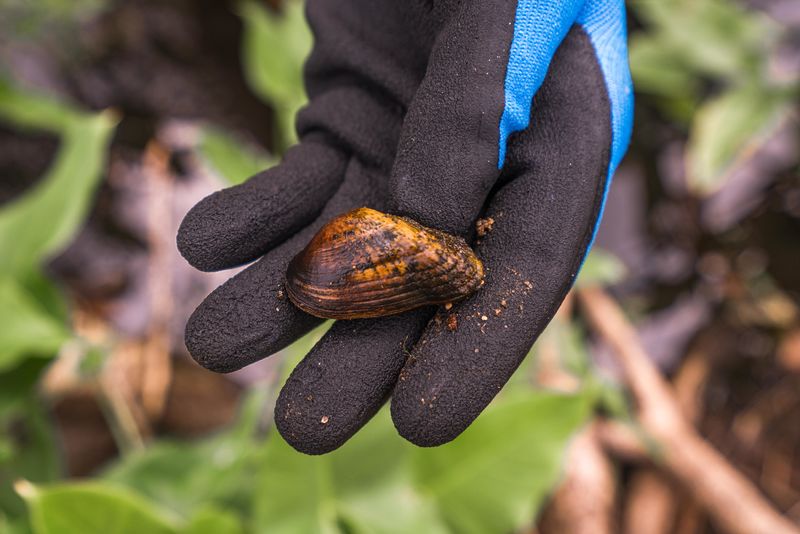
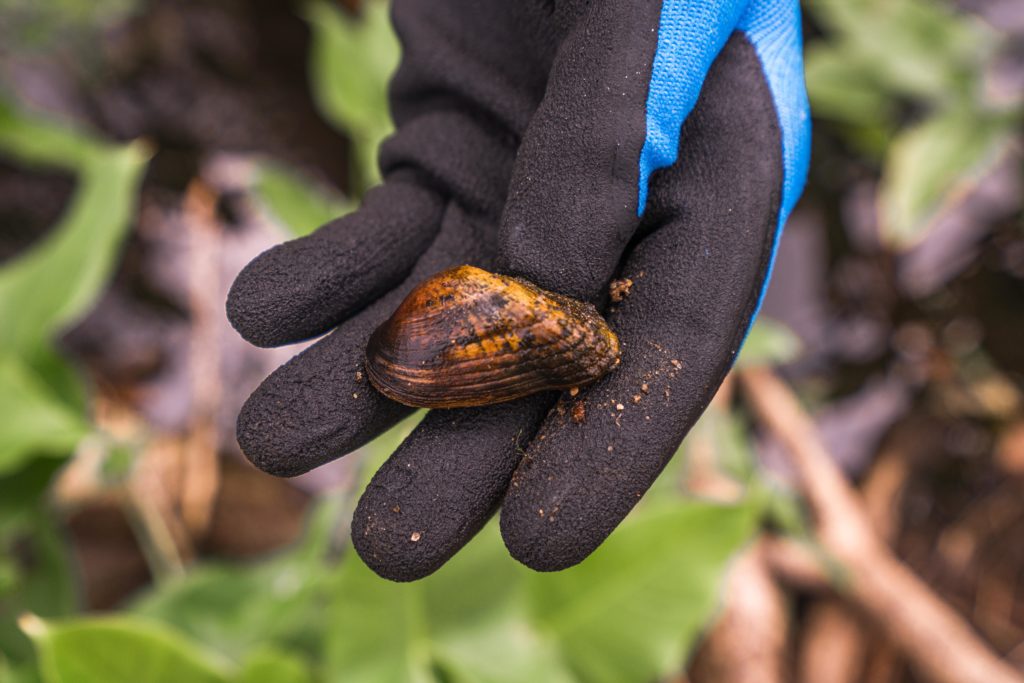
Round Pigtoe Mussels, too!
In addition to the snuffbox mussels, ECT and ASTI Environmental have also found Round Pigtoe mussels in the section of the creek, shown in the photo above. While not considered as endangered as the snuffbox mussel, they are still important to monitor for population size. Our crews have found this species embedded in the paper pulp below the surface.
Stay tuned for future updates!
Check back on the blog and our social channels as we explore the possibility of restoration of the portion of the creek behind The Mill. In the meantime, enjoy some more images of our human and mussel friends!
